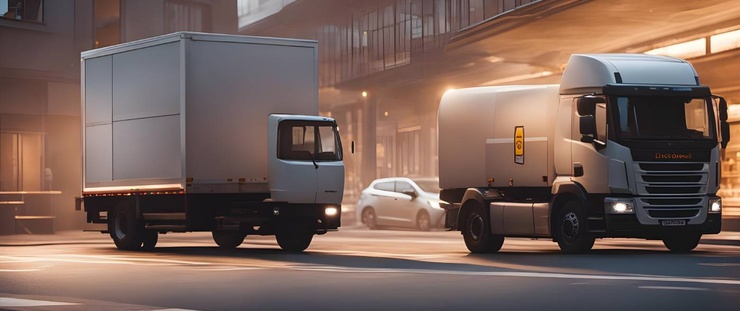- Logistics Complexity
Predictions on delivery management: the future of shipping and delivery
A Look Back
2021 wasn't just another year that came to a close. It has been a rather critical one for the supply chain and the delivery industry. The Evergreen getting stuck in the Suez Canal, the hydrocarbon crisis in the European Union, port congestion in the United States triggered by the import deluge during the holiday season are some of the key events that grabbed global attention. While the world is trying to limp back to rather different normalcy, it has certainly strained global supply chain networks to an unimaginable extent.
History will remember this year as an eventful one while it has also been one to re-state the importance of technology. There is a growing realization on how critical it is to remain flexible and agile to take swift actions when disruption strikes the normal course of events. It will still take anywhere from 15-20 months for the after-effects of these changes to set in and get comfortable with.
At FarEye, it has been a pretty eventful year too. With an additional $100 Million USD in funding, which made news in Times Square, we have made a grand foray in both the United States and the European Union markets with a marquee list of customers. Here’s a glimpse of how our platform has supported customers in the past year.
Predictions for 2022
The ripple effect of the pandemic shockwaves may still take a few more months to settle. While there will be bottlenecks and teething problems shifting into the new order, with the right technology in place, the impact can be minimized. Here are our top 5 predictions:
Continued growth in logistics as global economies rebound from the pandemic and online penetration increases in the retail markets
Supply chain bottlenecks will likely continue through the first half of 2022. Container rates, especially those servicing transpacific routes, will see continued higher prices
Greater investment in logistics software and technology such as RTTV and delivery orchestration solutions as shippers and carriers seek more flexibility and agility to better optimize their supply chains to overcome bottlenecks
Increased adoption of autonomous technologies such as drones and autonomous delivery trucks. These will reduce costs and alleviate pressures from labor shortages
Continued focus on sustainability with more efficient routing, electric vehicles to decrease the overall carbon footprint
How will the shipping and delivery industry change in 2022?
Consumers have adapted to online shipping over the past few years and it has changed their purchasing habits. Consumers now demand multiple delivery options when purchasing e-commerce. The growing trend for omnichannel fulfillment has changed the lives of both carriers and shippers alike.
Expect large advancements in omnichannel fulfillment and greater adoption of non-traditional fulfillment options such as curbside pickup, parcel lockers, dropshipping (D2C shipping), pop-up distribution centers, and dark stores. These give shippers and carriers more flexibility allowing them to adapt to demand surge and capacity shortage.
Continued consolidation (active M&A) market
Diversification with many market players new service offerings
What technological advancements are forecast in the shipping and delivery space in 2022?
Managing capacity and overcoming bottlenecks caused by increased demand for goods and lack of available capacity caused by driver shortages. Supply chains need to be flexible, agile, and adaptable and are already investing in technology to achieve that.
Technology will be a big area of investment in 2022. Billions in funding have poured into logistics technology startups as investors are capitalizing on the opportunity to improve supply chains. Platforms that utilize ML and AI will be a major focus as it allows shippers and carriers to spot problems (like Covid-19 shortages or the supply chain crisis) more quickly and take earlier actions when they arise.
How can brands stay relevant in 2022?
Consumer demand for fast, free, flexible shipping will only increase. Shippers and carriers that can best address these demands will have a competitive advantage over those who cannot. Retailers like Amazon are setting shipping and delivery standards that smaller competitors will need to provide to stay competitive.

Komal Puri is a seasoned professional in the logistics and supply chain industry. As the AVP of Marketing and a subject matter expert at FarEye, she has been instrumental in shaping the industry narrative for the past decade. Her expertise and insights have earned her numerous awards and recognition. Komal’s writings reflect her deep understanding of the industry, offering valuable insights and thought leadership.
Let's Talk to Our Experts and Optimize Your Deliveries Today!
An expert from our team will reach out within 24 hours



